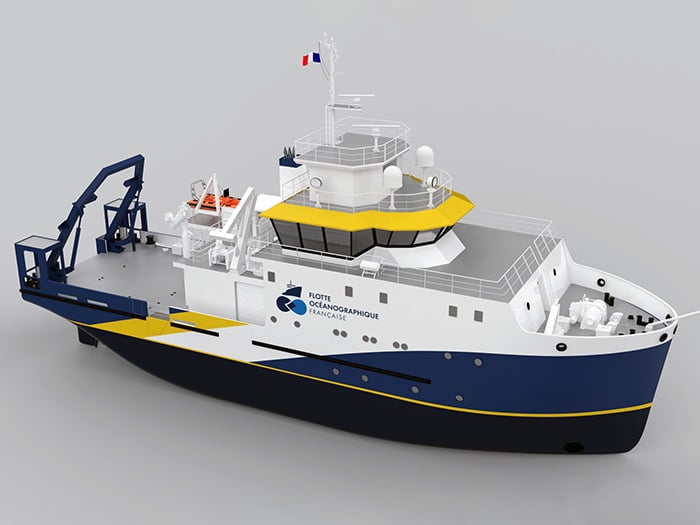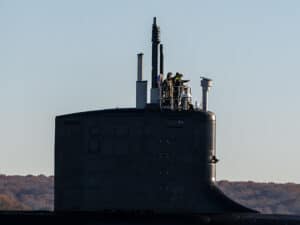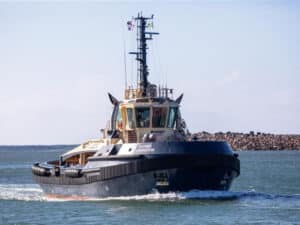
Freire Shipyard selected to build new IFREMER research vessel
Written by Nick Blenkey
The new IFREMER research vessel will feature a wide range of energy savings technologies and low energy-consumption solutions. [Image: IFREMER]
The family-owned Freire Shipyard in Vigo, Spain, has recently signed a contract with the French national institute for ocean science IFREMER for the construction of a new vessel. It will join the the French oceanographic fleet, which IFREMER operates for the benefit of the French scientific community.
Freire, which has extensive experience with research vessels, including the new MBARI ship David Packard, was awarded the contract after an international call for tenders, with its bid being selected as best based on price and technical criteria.
The French-flagged vessel will have a length over all of 40.30 meters, a beam of 10 meters and a reduced draft. It will accommodate a crew of 12 people and 10 scientists, allowing for training campaigns with teachers and students on board.
IFREMER will use the vessel for research on all disciplines of oceanography in Atlantic coastal areas: geosciences and paleoclimatology, physical oceanography and biogeochemistry, biological oceanography, and ecosystem functioning, from the coastline to the continental shelf. It will also perform duties related to fishery on the continental shelf.
The new IFREMER research vessel will feature a wide range of energy savings technologies and low energy-consumption solutions, implemented through from the hull design and power plant design, the power distribution system, the heat recovery system, the level of thermal insulation and the efficiency of air conditioning.
The diesel electric propulsion system will combine three main variable speed generator sets (prepared for operation on biodiesel), two shaft lines driven by electric motors and a DC electric distribution system along with a battery pack. In addition to optimizing consumption and incorporating good redundancy, the system will deliver an acoustic performance that meets the requirements of both the BV COMF 2 class notation and the DNV SILENT-F standard. A dynamic positioning system and electric bow thruster will enhance maneuverability.
An oceanographic marine telescopic main crane at the aft of the vessel is designed to launch and to recover scientific equipment (corer, buoys, etc.) as well as being used for general handling purposes.
The vessel will be fitted with a type A stern gantry, a T-type lateral gantry and a telescopic rail beam for CTD maneuvering. For fishing operations, it will be fitted with two trawling winches and a removable net drum.




